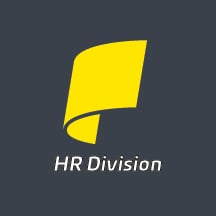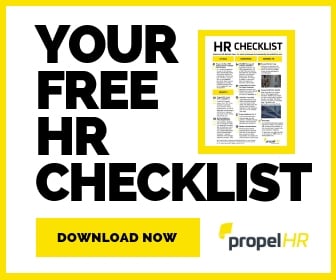Love it or hate it, the Affordable Care Act (ACA) was a major step in providing access to affordable healthcare insurance options and controlling health care costs.
According to the CDC, in 2010, when ACA became law, more than 16 percent of Americans, more than 48.6 million people, were uninsured. In 2018, 9.2 percent of the population, more than 29.7 million, were uninsured.
The ACA was intended to improve our health care system by expanding health insurance coverage to more people, however, there has been much controversy surrounding the requirements and the results. Initially, the law required that all Americans have health insurance or pay a penalty. Those who qualified received subsidies for health insurance. Those who did not qualify could purchase health plans through a marketplace or through an independent health insurance broker. There have been some changes in the original law.
ACA Goals
Whether ACA has been successful is up for debate, however the original law focused on the following goals:
 Provide access to affordable health insurance to more people. Low income households could take advantage of subsidies or premium tax credits to lower health plan costs and a healthcare marketplace was created for those who could afford insurance.
Provide access to affordable health insurance to more people. Low income households could take advantage of subsidies or premium tax credits to lower health plan costs and a healthcare marketplace was created for those who could afford insurance.
Protect the Insured. ACA protected existing health insurance policyholders by including essential provisions, such as coverage of pre-existing conditions, such as pregnancy.
Expand Medicaid. ACA expanded the Medicaid program to cover all adults with incomes below the federal poverty level.
Lower Costs. The law was designed to improve the method of our health care delivery system and to contain health care costs.
Help Small Businesses Insure Employees. It also included provisions to help small businesses insure its employees.
REQUIREMENTS FOR EMPLOYERS
The ACA meant changes for employers. Under the health care law, employers that provide health coverage to their employees are subject to annual reporting, and must comply with additional requirements depending on the number of full-time employees (FTEs), or full-time equivalents, during the current year.
Employers with 50+ employees
Applicable Large Employers (ALE), employers with 50 or more FTEs, including equivalents, are required to offer affordable coverage or make a payment to the IRS to subsidize government health plans.
 Determining FTEs and ALE status. According to the IRS, a full-time employee, or FTE, is one who has worked a minimum of 30 hours a week, or at least 130 hours in a calendar month. To determine the number of FTE equivalent employees, combine all of the hours worked each month and divide by 120. Your company is considered an ALE if the result of the total number of FTEs and equivalents combined, divided by 12, is 50 or more.
Determining FTEs and ALE status. According to the IRS, a full-time employee, or FTE, is one who has worked a minimum of 30 hours a week, or at least 130 hours in a calendar month. To determine the number of FTE equivalent employees, combine all of the hours worked each month and divide by 120. Your company is considered an ALE if the result of the total number of FTEs and equivalents combined, divided by 12, is 50 or more.
Minimum value means that the plan covers at least 60 percent of the total allowed cost of benefits that are expected to be incurred under the health plan. Since employers do not have access to an employee’s income statements, employers are allowed to use Form W-2 wages, an employee’s rate of pay, or the federal poverty line, to determine if a plan meets ACA’s guidelines for affordability.
Employers with fewer than 50 employees
Small employers, those with fewer than 50 FTEs or equivalents, are not subject to the requirements under the employer shared responsibility provisions, but do have reporting obligations as a provider of minimum essential coverage through a self-insured health plan. For a list of specific ACA tax provisions, visit the IRS page on ACA.
ACA REPORTING FOR 2019
Each year, ALEs are required to report information about their employee health coverage plan and information about the offer of coverage. This information helps the IRS determine whether an ALE owes a payment under the employer shared responsibility provision and if an employee is eligible for the premium tax credit.
Filing requirements include:
 Form 1094-C: Transmittal of Employer-Provided Health Insurance Offer and Coverage Information Returns, Form 1094-C, is used to report the summary of information for each ALE employer.
Form 1094-C: Transmittal of Employer-Provided Health Insurance Offer and Coverage Information Returns, Form 1094-C, is used to report the summary of information for each ALE employer.
Form 1095-C: Employer-Provided Health Insurance Offer and Coverage, Form 1095-C, includes information about health coverage for full-time employees and information about enrollment in health coverage for employers that sponsor self-insured health plans. ALEs are also required to distribute Form 1095-C for each full-time employee.
Deadlines for both forms:
Feb. 28. If filing by paper.
March 31. If filing electronically. Employers filing 250 or more information returns must file electronically.
March 2 (Extended from Jan. 31). Employers must distribute Form 1095-C to full-time employees, including former employees, by March 2, which was recently extended 30 days.
State Requirements. Some states have enacted specific requirements for individual coverage and reporting. Employers should always check with the reporting and filing requirements for their state.
NEED HELP?
Given the complexity of ACA reporting, employers should stay on top of their workforce data and understand how the regulations and reporting requirements for health care coverage can impact their business.
PLEASE NOTE: This information is for general reference purposes only. Because laws and regulations are constantly changing, please check with the appropriate organizations or government agencies for the latest information and consult your employment attorney and/or benefits advisor regarding your responsibilities. In addition, your company or health plan may be exempt from certain requirements and/or be subject to different requirements under the laws of your state.










